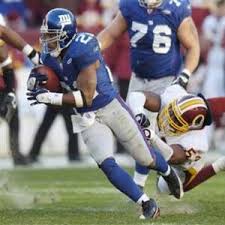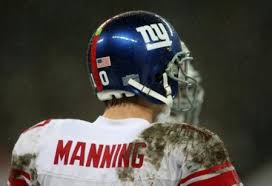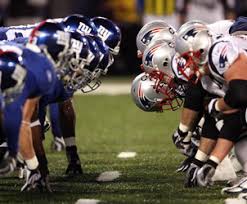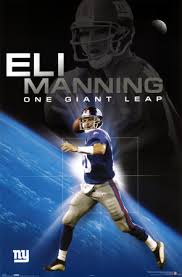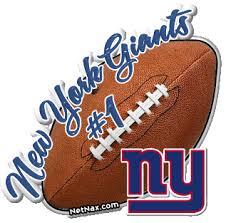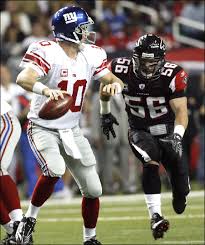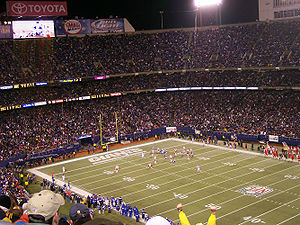New York Giants vs Dallas Cowboys live telecasting NFL TV United States on pc free
NFL
United States
The National Football league called NFL.
New York Giants vs Dallas Cowboys
Match scheduled:
Date: 21-09-2009
Time: 02:20 until 05:50
Week 2 :: NFL Regular Season 2009/2010

In a fourteen-year span from 1933 to 1946, the Giants qualified to play in the NFL championship game 8 times, winning twice.[5] During the period the Giants were led by Hall of Fame coach Steve Owen, and Hall of Fame players Mel Hein, Red Badgro, and Tuffy Leemans. This period also included the famous "Sneakers Game", where they defeated the Chicago Bears on an icy field in the 1934 NFL Championship game, while wearing sneakers for better traction.[5] The Giants were particularly successful from the latter half of the 1930s until the United States entry into World War II. They added their third NFL championship in 1938 with a 23–17 win over the Green Bay Packers.[5]
[edit] 1947–63
They did not win another league title until 1956, aided by a number of future Pro Football Hall of Fame players such as running back Frank Gifford, linebacker Sam Huff, and offensive tackle Roosevelt Brown, as well as all-pro running back Alex Webster. The Giants' 1956 championship team not only included players who would eventually find their way to the Pro Football Hall of Fame, but it also had a Hall of Fame coaching staff. Head coach Jim Lee Howell's staff had Vince Lombardi coaching the offense and Tom Landry coaching the defense.[8] From 1958 to 1963, the Giants played in the NFL Championship Game five times, but failed to win.[5] Most significantly, the Giants played the Colts in the 1958 NFL Championship Game that is considered a watershed event in the history of the NFL.[9] The game, which the Giants lost in overtime 23–17,[5] is often considered one of the most important events in furthering the NFL's popularity in America. The following year, they gave up a 16–9 4th quarter lead to again lose to the Colts in the championship game, 31–16. In 1963 led by league MVP quarterback Y.A. Tittle, who threw an NFL record 36 touchdown passes, the Giants advanced to the NFL Championship Game, where they lost to the Bears 14–10.
[edit] 1964–78
From 1964 to 1978, the Giants registered only two winning seasons and were unable to advance to the playoffs.[4] With players such as Tittle and Gifford approaching their mid 30s, the team declined rapidly, finishing 2–10–2 in 1964.[4] They rebounded with a 7–7 record in 1965,[4] before compiling a league-worst 1–12–1 record,[10] and allowing more than 500 points on defense in 1966.[10] During the 1969 preseason, the Giants lost their first meeting with the Jets, 37–14, in front of 70,874 fans at the Yale Bowl in New Haven, Connecticut.[11] Following the game, Wellington Mara fired coach Allie Sherman,[12] and replaced him with former Giants fullback Alex Webster.
In 1967, the team acquired quarterback Fran Tarkenton from the Minnesota Vikings. Despite having several respectable seasons with Tarkenton at quarterback, including a 7–7 finish in 1967 and 9–5 in 1970,[4] the Giants traded him back to the Vikings after the 1971 season when the Giants went 4–10.[13] Tarkenton would go on to lead his team to three Super Bowls and create a Hall of Fame resume,[13] while the Giants suffered through one of the worst stretches in their history.[4] Starting in 1973 the Giants compiled only 23 wins in 6 seasons.[4] Before the 1976 season, the Giants tried to replace retired RB Ron Johnson with future HOF fullback Larry Csonka to revive a weak offense. Csonka was unfortunately often injured and ineffective during his 3 years in New York. The 1977 season also featured the unusual choice of having three rookie quarterbacks on their roster.[14]
During this period, due to the renovation of Yankee Stadium, which the team shared with baseball's New York Yankees, the Giants were forced to play their home games at the Yale Bowl from 1973 through 1974, and Shea Stadium in Queens, NY in 1975.[8] They finally received their own dedicated state-of-the-art stadium in 1976,[8] when they moved into Giants Stadium at the Meadowlands in East Rutherford, New Jersey. One of the low points during this period was the so-called "Miracle at the Meadowlands," which occurred in 1978.[15] With the Giants needing only to kneel the ball to secure a certain victory against the Philadelphia Eagles,[15] they chose to call a running play—which resulted in a fumble that was returned for a game-winning touchdown by the Eagles' Herman Edwards.
[edit] 1979–93
In 1979, the Giants began the steps that would, in time, return them to the pinnacle of the NFL. These included the drafting of quarterback Phil Simms in 1979, and linebacker Lawrence Taylor in 1981.[8] In 1981, Taylor won the NFL's Defensive Rookie of the Year and Defensive Player of the Year awards and the Giants made the playoffs for the first time since 1963.[4][16] One of the few bright spots during this time was the team's excellent linebackers, who were known as the Crunch Bunch.[17] After the strike-shortened the 1982 season, in which they finished 4–5,[4] head coach Ray Perkins resigned to take over the same position at the University of Alabama. In a change that would prove crucial in the coming years, he was replaced by the team's defensive coordinator, Bill Parcells.
[edit] Parcells era
The Giants struggled in Parcells's initial year and finished with 3–12–1 record.[4] After 9–7 and 10–6 finishes in 1984 and 1985 respectively,[4] the Giants compiled a 14–2 record in 1986 led by league MVP and Defensive Player of the Year Taylor. After defeating the 49ers and Redskins by a combined score of 66–3 in the playoffs, the Giants advanced for the first time to play the Denver Broncos at the Rose Bowl in Pasadena in Super Bowl XXI. Led by Super Bowl MVP Simms who completed 22 of 25 passes for a Super Bowl record 88% completion percentage, they defeated the Broncos 39–20,[18] to win their first championship since 1956. In addition to Simms and Taylor, the team was led during this period by head coach Bill Parcells, tight end Mark Bavaro, running back Joe Morris, and Hall of Fame linebacker Harry Carson.



